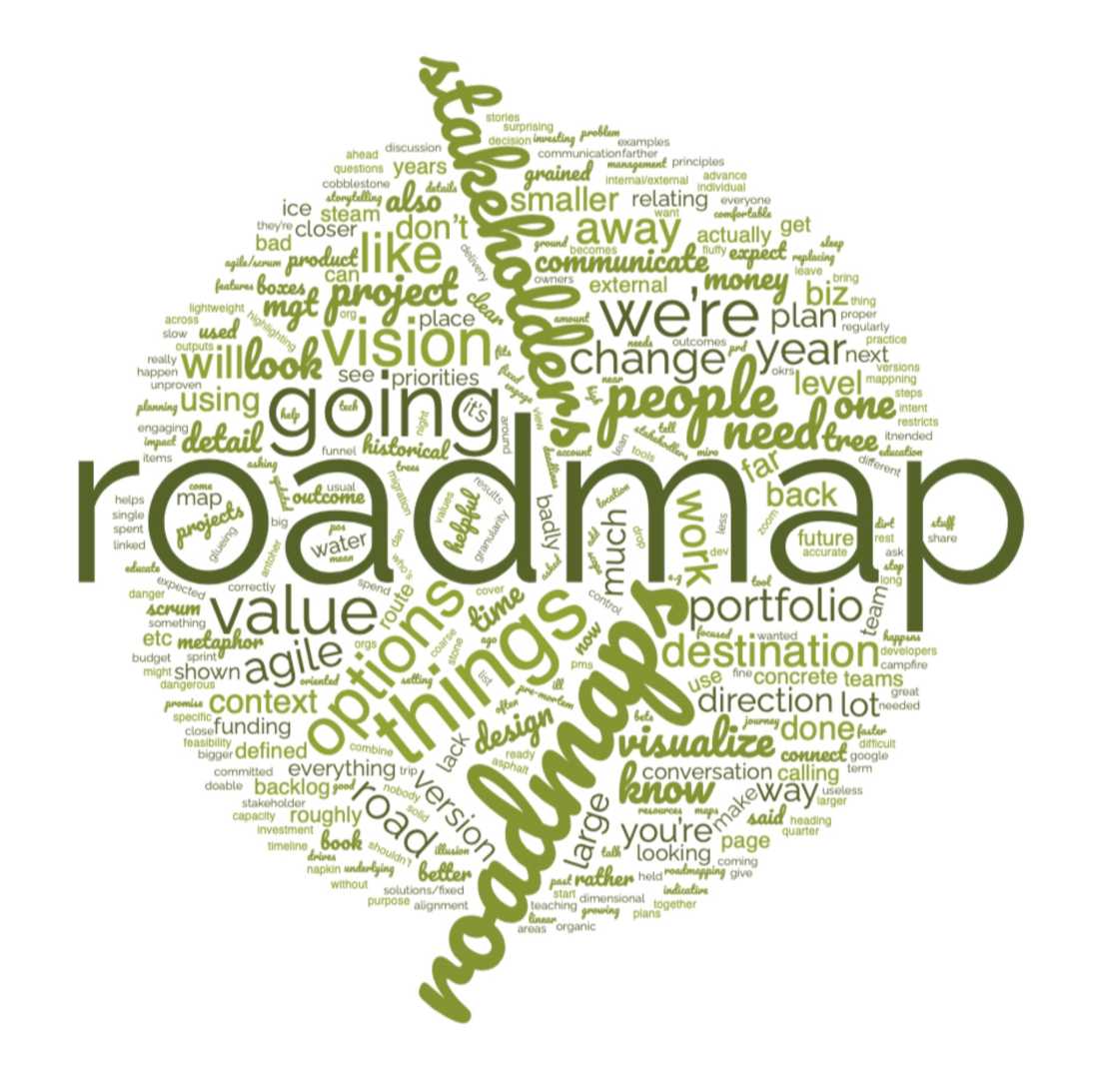
How do you map your road?
# Traditional Roadmap
Traditional roadmaps are commonplace in organisations that adhere to annual budgeting, forecasting, and planning cycles. They are frequently the product of a convoluted bureaucratic and/or political process that employs a **predictive** approach. These roadmaps may be devised as part of a procedure that allocates budgets, selects projects, and assigns resources by optimising resource utilisation. Alternatively, they may be produced and maintained as part of Project and Portfolio Management activities.
The creation of traditional roadmaps is informed by the upstream definition of the organisation's strategic goals. The approach used to create the roadmap has a significant downstream impact on the management of the related projects, as it imposes additional constraints. These constraints are often reinforced by the conventional organisational structure and governance.
When traditional roadmaps are used in an Agile context or for initiatives that require an adaptive approach, it can lead to the emergence of Agile anti-patterns. In some cases, these traditional roadmaps are mistakenly referred to as 'Agile' roadmaps or 'Lean' Portfolio Management. Here is a list of issues that arise when using them in an Agile context:
- Implicit reliance on foresight and control - Cumbersome upfront planning - A top-down, siloed approach to planning - Rigid planning resulting from the roadmap being defined in terms of deadlines instead of evolving priorities - Rigid planning caused by fixed scope/deadline contracts with suppliers or commitments made with stakeholders unwilling or unavailable to renegotiate - Rigid and complex planning resulting from assigning tasks to individual roles and functions, such as in Gantt charts, leading to conflicting plans between functions - Wishful thinking in planning where resources are simultaneously assigned to multiple parallel workstreams, ignoring the cost of multitasking at best, and often allowing the total full-time equivalent (FTE) for a resource to exceed 100%.
# Options
An alternative to traditional linear roadmaps with large projects, is a roadmap consisting of sets of options such as small and lightweight bets, hypotheses, and experiments. These options are about a desired outcome, product or service, rather than a project.
Together, these options provide a visual representation and effective communication of an agreed direction of travel that is expected to develop over time, with a destination that becomes more apparent as the journey unfolds. The options are progressively refined and detailed as they move closer to the front of the queue. Depending on whether an option is validated or disproved once implemented, other options can be re-prioritised, new options can be created, and others can be chosen or discarded. This approach emphasises an iterative process with frequent reviews of the bets, hypotheses, and experiments as work progresses, rather than adhering to a fixed roadmap.
This dynamic and flexible approach is significantly simplified and remains efficient due to an organisational structure based on business units, product categories, or product areas (such as value streams), each with stable, longstanding teams. In this way, the work is directed towards stable teams rather than individual resources swarming to the next projects. As a result, resource planning (that is now founding the stable longstanding teams) is separated from the process of creating the roadmap. The budgeting assigns funds (a money-pot) to the business unit, products category, or product area, decoupling the funding from the individual options, and allowing for the flexibility required by the evolving situation.
This approach involves broader participation in forming and prioritising the options, with leaders, stakeholders and those doing the work all collaborating in the process.
The options can be organised in a 1-2 levels decision tree when it is possible to know in advance which options will follow based on whether one option will be validated or disproved. Or they can be organised is queues where the options to be evaluated first are at the front of the queue.
Ultimately options are an effective **adaptive** tool that creates clarity and supports important decision-making in the modern reality of continuously changing and evolving circumstances.
*Thanks to* - *Willem van den Ende* - *Marc Evers* - *Rob Westgeest* *from QWAN and all the participants to their 2022 Agile Cambridge session 'How do you map your roads?' for proving inspiration and insights.*